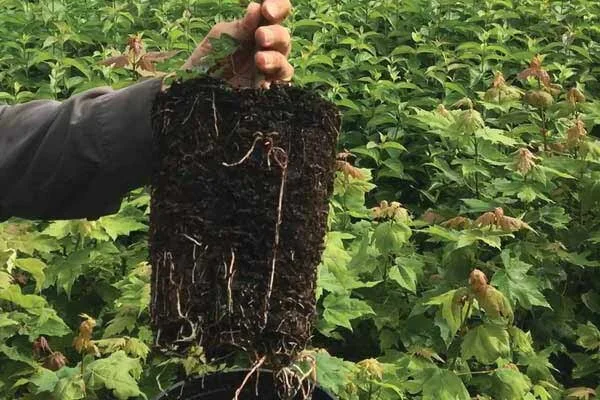How to Air Prune
The Art of Air Pruning
At Native Forest Nursery, we are passionate advocates of air pruning, and that is why we grow all of our over 100,000 containerized plants in RediRoot™ air pruning containers. In this brief post, we outline the definition and advantages of air pruning and root making to explain the how and why behind this revolutionary process.
Defining Air Pruning
The practice of air pruning was introduced by plant pioneer and innovator Dr. Carl Whitcomb, based on his four decades of horticultural research. It’s basically the process of introducing dry air into the plant root system, causing the root’s tip to dehydrate or desiccate due to the absence of the high humidity the root needs to survive and grow. Once the root comes in contact with the air and “prunes” itself from the lack of humidity the root consequently branches out into large numbers of secondary roots. This results in a container more evenly filled with roots and root tips as well as a healthy, multi-branched root structure that enables the plant to thrive within the container and after transplanting.
Let’s take a moment to contrast air pruning versus root growth in conventional solid walled containers.
In a typical container or pot, where roots aren’t exposed to air, roots too often circle around the container or pot in a constricted design that may ultimately strangle the plant. Root circling is out of sight within the walls of the container where the plant’s roots may spiral, kink, or twist. Deformed root systems are unable to absorb the necessary water and nutrients causing the plant to suffer from abnormal and sub-optimal growth. When transplanted or installed in a restoration project, the plant may die altogether.
The Advantages of Air Pruning
The first step to ensuring that you avoid the problems associated with deformed roots is to set up an air pruning environment for your plant. At Native Forest Nursery, we grow 100% of our over 100,000 containerized plants in Air Pruned Containers that are scientifically proven to promote the root making process.
Air pruning results in:
A better structured root system. Air pruning promotes root making and branching which fills the entire pot with roots. It also eliminates the spiraling and strangling of roots.
Better root structure directly relates to the plant’s improved abilities to absorb water and nutrients.
A healthier intake of water and nutrients results in increased plant productivity including growth, flowering and fruiting.
Increased survival and vigor once transplanted. A healthy plant with a strong root system will outperform a plant with low vigor and deformed roots every time.
While “air pruning” may be a relatively revolutionary term for some, aeration containers, sacks, and pots are becoming all the more popular and affordable, especially as a genuine long-term investment. From university lab rooms to tree nurseries to home lawns, the advantages of air pruning have proven immediate, consistent, and measurable.


